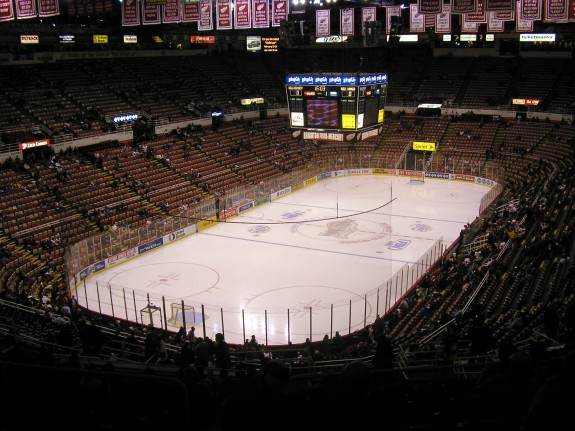
Ilitch Holdings released its plans for the new Detroit Red Wings arena as well as a surrounding entertainment district Sunday morning.
Construction on the $450 million arena and $200 million entertainment district will start in September and is scheduled to be done in the summer of 2017. Here are the four biggest takeaways from the release of the plans.
Entertainment District
One of the biggest features of the new arena is it will be surrounded by an entertainment district. This entertainment district will have apartments, restaurants, office buildings, parks and shops over 45 blocks.
Imagine the amount of business this area will be able to bring in. You eat dinner with a group of friends at a restaurant before the Red Wings game, go to the game and have a couple of drinks at the bar after the game.
And that doesn’t even include all of the people working in offices during the day who can also spend their money in the entertainment district.
It will be in a great location near Comerica Park and Ford Field, so patrons of those two teams can also enjoy the amenities the entertainment district has to offer.
The entertainment district will be open 365 days per year, so the arena won’t be deserted in the summer when the Red Wings are done playing. Mike Ilitch, CEO of Ilitch Holdings, said the venue is scheduled to have more concerts, shows and other events than hockey games.
Arena Features
When the first plan of the new arena was proposed, the plan estimated it would hold only 18,500 fans, a big drop from the 20,066 Joe Louis Arena currently holds.
However, the new plan estimates it will seat about 20,000 fans. For a team that sells out a majority of its games, it’s important to keep it close to the number of seats Joe Louis Arena has. The new arena is only going to attract new fans and limiting the seating capacity to 18,500 would have been a disaster.
A concept image, shown below, shows the proposed arena with a lighted roof that is capable of showing images. The view of that roof during a winter night is going to be nothing short of beautiful.
ICYMI: New, world-class arena – future home of the Detroit Red Wings – to open summer of 2017. http://t.co/JaPZVvrhxY pic.twitter.com/3F1NLhteoe
— Detroit Red Wings (@DetroitRedWings) July 20, 2014
A big feature of the arena is the playing surface will be located 32-24 feet below street level, which means the building will only stand two or three stories tall. Ilitch said there was a specific reason why they decided to build below street level.
It won’t be imposing to its neighbors.
Naming Rights
This is where things could get ugly.
Olympia Development of Michigan will retain the rights to sell the name of the arena, meaning the new arena could be called The Chevy Center or something else as equally awful.
It makes sense financially to sell the rights to a corporation, especially for Detroit which just declared bankruptcy, but fans will not like it.
Joe Louis Arena is rich in tradition and history. It would be a crime to stamp a corporate logo on an arena for a team that has been the most successful for Detroit.
However, selling the rights is most likely what will happen, as the other two recent stadiums in Detroit had their naming rights sold: Comerica Park and Ford Field.
It won’t be easy to digest in the beginning, but the amount of business this new entertainment district will bring to the city will more than make up for the potentially awful arena name.
Benefits
Olympia predicts the work will create 8,300 construction jobs and 1,100 permanent post-construction jobs in addition to the at least $1.8 billion in economic impact for the city, region and state.
Also planned for the entertainment district are community outreach programs, such as a Cass Tech internship program, office space for local startups and support for local minority chefs and entrepreneurs.
The entertainment district certainly is an investment in the city of Detroit. It won’t solve all of its problems, but it should be a good start toward a better and brighter future for a city that has fallen on hard times recently.